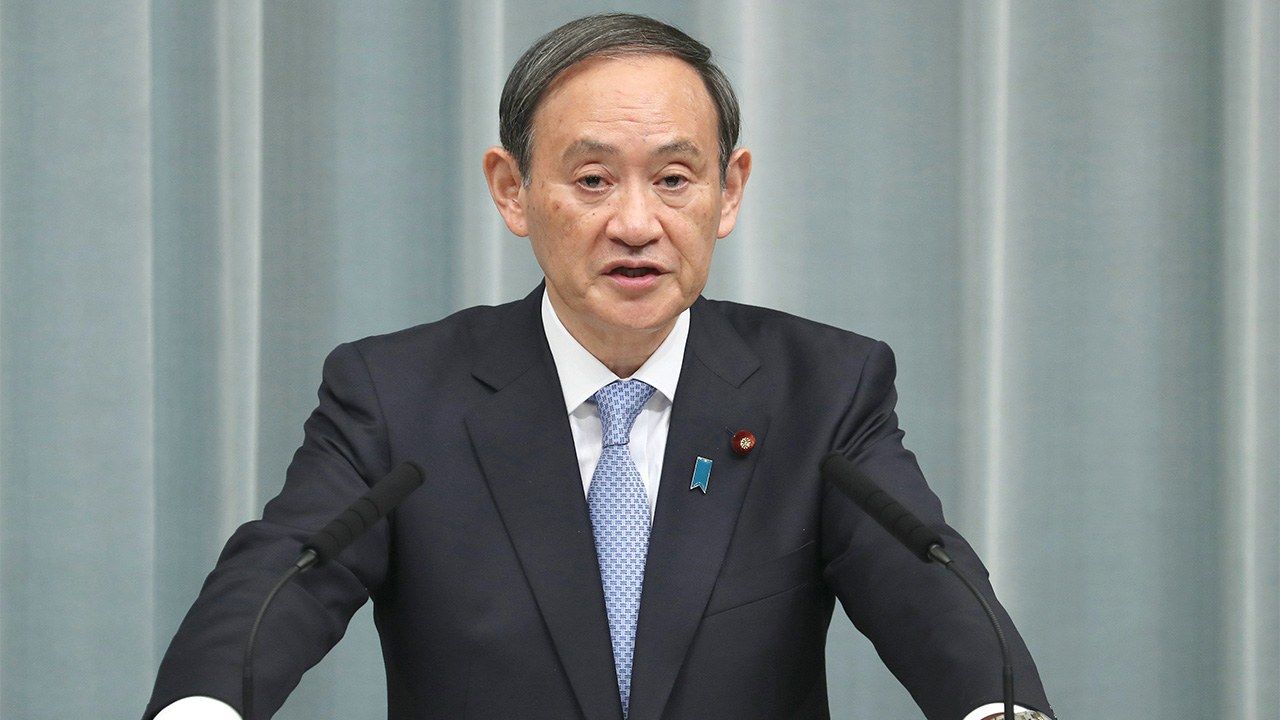
The Key Government Post of Chief Cabinet Secretary
Politics- English
- 日本語
- 简体字
- 繁體字
- Français
- Español
- العربية
- Русский
The Japanese politician most in the public eye, with the exception of the prime minister, is the chief cabinet secretary. At two regularly scheduled daily press conferences, this official lays out fundamental government policies in his role as cabinet spokesman. But this public-oriented role is just one part of the job. The chief cabinet secretary is also responsible for crucial, broad-ranging tasks that include coordinating policy across governmental ministries, negotiating within the cabinet, serving as a conduit between the prime minister and his party, handling crisis management, and dealing with political scandals.
The chief cabinet secretary is considered the right-hand man of the prime minister, so the post has been held by many highly competent, problem-solving politicians close to the premier. At times, the chief cabinet secretary is considered the shadow prime minister because of the huge influence wielded, but most who have held the post have remained devoted to performing the role of chief advisor. Indeed, since the start of the Heisei era in 1989, there have only been three chief cabinet secretaries who went on to become prime minister: Obuchi Keizō, Abe Shinzō, and Fukuda Yasuo.
Suga Yoshihide has held the position since Prime Minister Abe began his second period of office on December 26, 2012. As of September 1, 2020, he had served 2,807 days in that post, making him the longest-serving chief cabinet secretary ever.
The eldest son of a farming family in Akita Prefecture, Suga moved to Tokyo under the “collective placement” (shūdan shūshoku) program for young workers at the time. He worked hard to earn money for school tuition and went on to graduate from university. After working in the private sector, he became the secretary of the former Ministry of International Trade and Industry, Okonogi Hikosaburō. After serving two terms on the Yokohama City Council, he was first elected to the House of Representatives in 1996.
His generally subdued image got a major boost when he unveiled the name of the current Reiwa era in an announcement watched by millions of Japanese citizens in April 2019. He is now considered the favorite candidate to succeed Prime Minister Abe.
Longest-Serving Chief Cabinet Secretaries
| Chief Cabinet Secretary | Cabinet(s) | Days Holding the Position |
|---|---|---|
| Suga Yoshihide | Prime Minister Abe Shinzō | 2,807 (as of September 1, 2020) |
| Fukuda Yasuo | Prime Ministers Mori Yoshirō and Koizumi Jun’ichirō | 1,289 |
| Hori Shigeru | Prime Ministers Yoshida Shigeru and Satō Eisaku | 1,258 |
| Gotōda Masaharu | Prime Minister Nakasone Yasuhiro | 1,075 |
| Miyazawa Kiichi | Prime Minister Suzuki Zenkō | 864 |
Fukuda Yasuo served as chief cabinet secretary under two successive administrations. The total for Hori Shigeru includes two nonconsecutive terms as chief cabinet secretary, the first from 1951 to 1952 and the second from 1968 to 1971.
Only a single woman has been chief cabinet secretary in the history of Japanese constitutional government: Moriyama Mayumi, who held the post during the first administration of Prime Minister Kaifu Toshiki. Moriyama, who was head of the Environment Agency at the time of her appointment in 1989, was chosen to replace a predecessor who had resigned in the wake of a scandal.
The Three Heisei Chief Cabinet Secretaries Who Became Prime Minister
| Chief Cabinet Secretary | Cabinet(s) | Period in the Position |
|---|---|---|
| Obuchi Keizō | Prime Minister Takeshita Noboru | November 6, 1987–June 3, 1989 |
| Fukuda Yasuo | Prime Ministers Mori Yoshirō and Koizumi Jun’ichirō | October 27, 2000–May 7, 2004 |
| Abe Shinzō | Prime Minister Koizumi Jun’ichirō | October 31, 2005–September 26, 2006 |
(Translated from Japanese. Banner photo: The current chief cabinet secretary, Suga Yoshihide. © Jiji.)